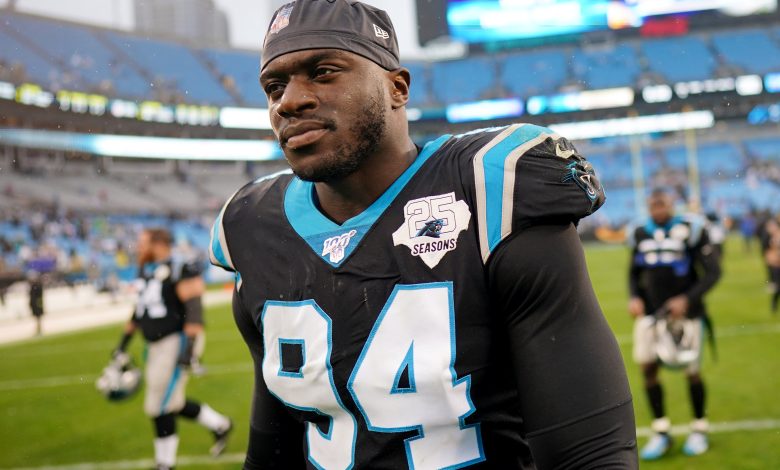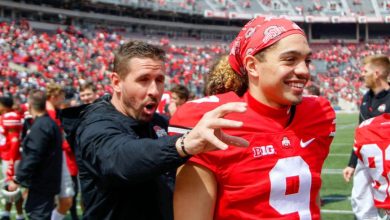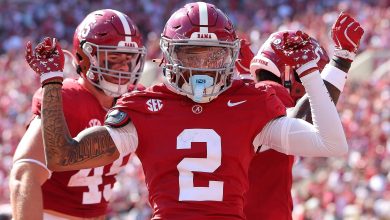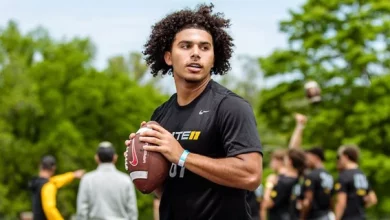In an attempt to get into the NFL, international athletes switch to American football.

The National Football League (NFL) is the pinnacle of American sports. Revered worldwide as the ultimate stage for American football players, the league is home to some of the most talented athletes in the world. While the game is rooted in American culture, its influence and appeal have transcended borders, drawing international athletes who dream of playing professionally in the NFL. For these athletes, the journey to the league is often a complex and challenging one, as they must switch from other sports to the highly specialized world of American football.
While the NFL was once predominantly composed of American-born players, in recent years, there has been a growing trend of international athletes attempting to make their way into the league. Some of these athletes come from countries where American football is not the most popular sport, and their paths to the NFL often involve taking a leap of faith, switching sports, and learning a completely new game. But with determination, athleticism, and a little bit of luck, international athletes have started to make their mark on the NFL. This phenomenon reflects not only the global growth of American football but also the increasing recognition of international athletes as valuable assets in the NFL’s pursuit of excellence.
The Rise of International Interest in American Football
While American football remains deeply ingrained in U.S. culture, its international footprint has expanded significantly in the past few decades. The NFL has actively worked to grow the sport’s presence globally, holding regular season games in London, Mexico City, and even hosting combine events for international athletes. The league has also established the International Player Pathway Program (IPPP), which gives international athletes the opportunity to showcase their talent and earn a spot on an NFL roster. This program has become one of the most significant vehicles for bringing foreign athletes into the NFL fold.
As the NFL continues to broaden its global reach, athletes from countries with little history in American football have started making the leap into the sport. These athletes, often from soccer (football) or rugby backgrounds, are drawn to the athleticism, physicality, and career potential that American football offers. For some, the idea of competing at the highest level in an elite, multi-billion-dollar league like the NFL is simply irresistible.
While it may seem like a leap from sports like soccer, rugby, or basketball to American football, there is a natural athletic transition between these games. American football requires strength, speed, and agility—all attributes that many athletes from other sports possess. What sets American football apart, however, is its unique structure, demanding physicality, and specialized roles that require a deep understanding of the game. Despite this challenge, many international athletes are willing to take that chance, believing that their athletic skills, determination, and mental toughness can help them overcome the learning curve.
Athlete Profiles: From Soccer to American Football
One of the most common transitions for international athletes seeking a career in the NFL is from soccer, the world’s most popular sport. Soccer players possess many of the skills needed for American football, such as speed, agility, stamina, and spatial awareness. These skills can easily be translated into positions like wide receiver, defensive back, or running back.
One notable example of a soccer-to-football transition is that of Moritz Böhringer, a German athlete who played soccer at a high level before deciding to switch to American football. Böhringer was a standout wide receiver in Germany’s football league, and his athleticism caught the attention of NFL scouts. He was selected by the Minnesota Vikings in the 2016 NFL Draft as part of the International Player Pathway Program, marking the first time a player from Germany was drafted to the NFL. Böhringer’s story is an example of how a soccer background can serve as a solid foundation for an NFL career. Although he did not remain in the NFL for long, his transition to the league paved the way for other international athletes to follow in his footsteps.
Another example is that of the French athlete, Gaëtan Ménard, who began his athletic career in soccer before moving to rugby. Recognizing his natural speed and strength, Ménard later switched to American football and made waves in the French league. He eventually earned a spot with the NFL’s International Player Pathway Program, allowing him to showcase his potential on a global stage. His commitment to learning the intricacies of American football, combined with his exceptional athletic abilities, demonstrated the growth of the sport in countries outside the U.S. and the rising interest in pursuing NFL careers from abroad.
These examples highlight the appeal of American football to athletes from around the world who have established careers in other sports but are looking for new challenges. In both Böhringer and Ménard’s cases, switching to American football was a strategic decision, combining their athletic abilities with the promise of exposure and opportunity within one of the world’s most lucrative sports leagues.
The NFL’s International Player Pathway Program (IPPP)
One of the key mechanisms driving the influx of international athletes into the NFL is the league’s International Player Pathway Program (IPPP). The program, established in 2017, is designed to identify, develop, and give international athletes the opportunity to play in the NFL. The IPPP focuses on recruiting players from countries where American football is not traditionally played, such as Europe, South America, and Africa. The program provides these athletes with coaching, training, and exposure to NFL teams, giving them a chance to compete at the highest level.
The success of the IPPP is evident in the growing number of international players who have earned spots on NFL rosters. While these athletes are not guaranteed a spot on a team, the program has created a clear pathway for international athletes to make their dreams of playing in the NFL a reality. Players who enter the IPPP attend training camps, receive professional coaching, and participate in NFL team activities. After a year of development, athletes are given the opportunity to audition for NFL teams, where they can be signed to practice squads or active rosters.
In addition to the International Player Pathway Program, the NFL’s global events—such as the NFL London Games—have provided international athletes with greater exposure to the league and increased their chances of being noticed by scouts. These events allow players from various countries to see NFL games up close, while also fostering the growth of American football in international markets. This, in turn, has encouraged athletes to consider the NFL as a legitimate career path.
Other International Sports and Transition to the NFL
While soccer is the most common sport from which international athletes transition to American football, athletes from rugby, basketball, and track and field have also made the leap. Rugby, in particular, shares similarities with American football, including the physicality of the sport, team-oriented strategy, and the importance of strength and agility. In countries like Australia, New Zealand, and South Africa, rugby players often possess the right physical attributes to thrive in American football, making their transition somewhat smoother than athletes from other sports.
One example is Jarryd Hayne, an Australian rugby league player who made headlines when he decided to switch codes to pursue a career in the NFL. Hayne was a star in Australia’s National Rugby League (NRL), known for his agility, speed, and powerful running ability. After retiring from rugby league, Hayne decided to try his hand at American football, signing with the San Francisco 49ers in 2015. Despite not having a football background, Hayne impressed many with his raw talent, and while his NFL career was relatively short, it paved the way for other rugby athletes to consider the possibility of playing in the NFL.
Additionally, there have been several basketball players who have switched to American football and found success in the NFL. Basketball shares common traits with football, including speed, strength, and the ability to read the game and make quick decisions. Athletes like Antonio Gates (who played basketball in college) and Jimmy Graham (who also transitioned from basketball to football) have found great success as tight ends in the NFL, showcasing how skills developed in other sports can be adapted to American football.
Challenges Faced by International Athletes
Despite the opportunities presented by the NFL, the path to professional football is far from easy for international athletes. The transition to American football from another sport can be difficult, as the game’s intricacies—ranging from playbook comprehension to technical skills—require significant time and effort to master. Learning the terminology, understanding the strategies, and adjusting to the intense physical demands of American football can be overwhelming for athletes who are accustomed to different sports.
Furthermore, the cultural differences between the United States and the athletes’ home countries can pose additional challenges. For instance, athletes from rugby or soccer backgrounds may need to adjust to a different style of training, different team dynamics, and even different approaches to media and fan interaction. Adapting to these elements requires a great deal of resilience and perseverance, which international athletes must develop in order to succeed in the highly competitive NFL environment.
Success Stories and Impact on the NFL
Despite these challenges, many international athletes have defied the odds and made a significant impact in the NFL. Players like Böhringer, Ménard, and Hayne have opened doors for future generations of international athletes looking to follow in their footsteps. Through their hard work, they have not only made it into the league but also contributed to the growing global appeal of the NFL.
The success of international athletes in the NFL also serves as an inspiration for future talent pools in countries where American football has yet to gain a significant foothold. By showcasing the potential of athletes from across the world, the NFL is gradually transforming from a domestic league to a truly global phenomenon, attracting athletes from all corners of the globe. This process highlights the league’s ability to adapt and evolve, continually pushing the boundaries of what is possible in professional sports.









